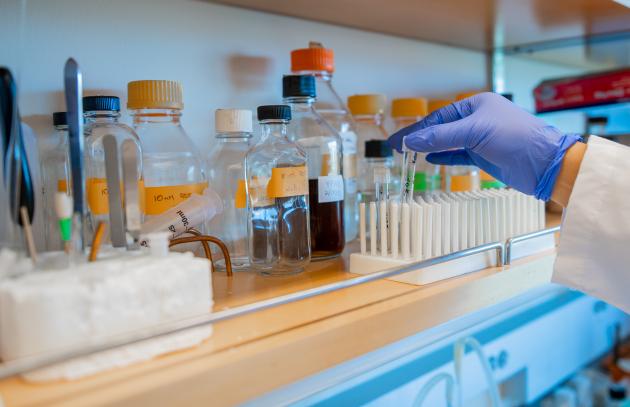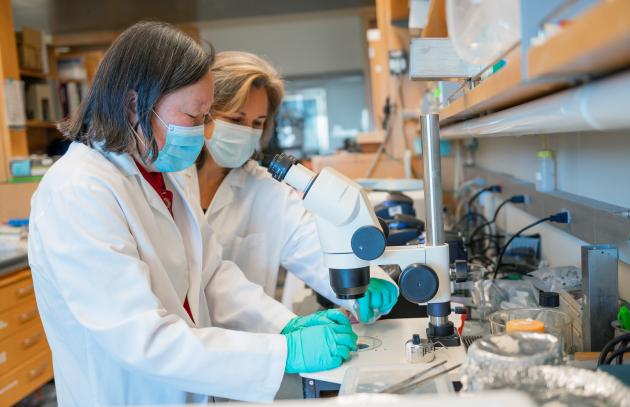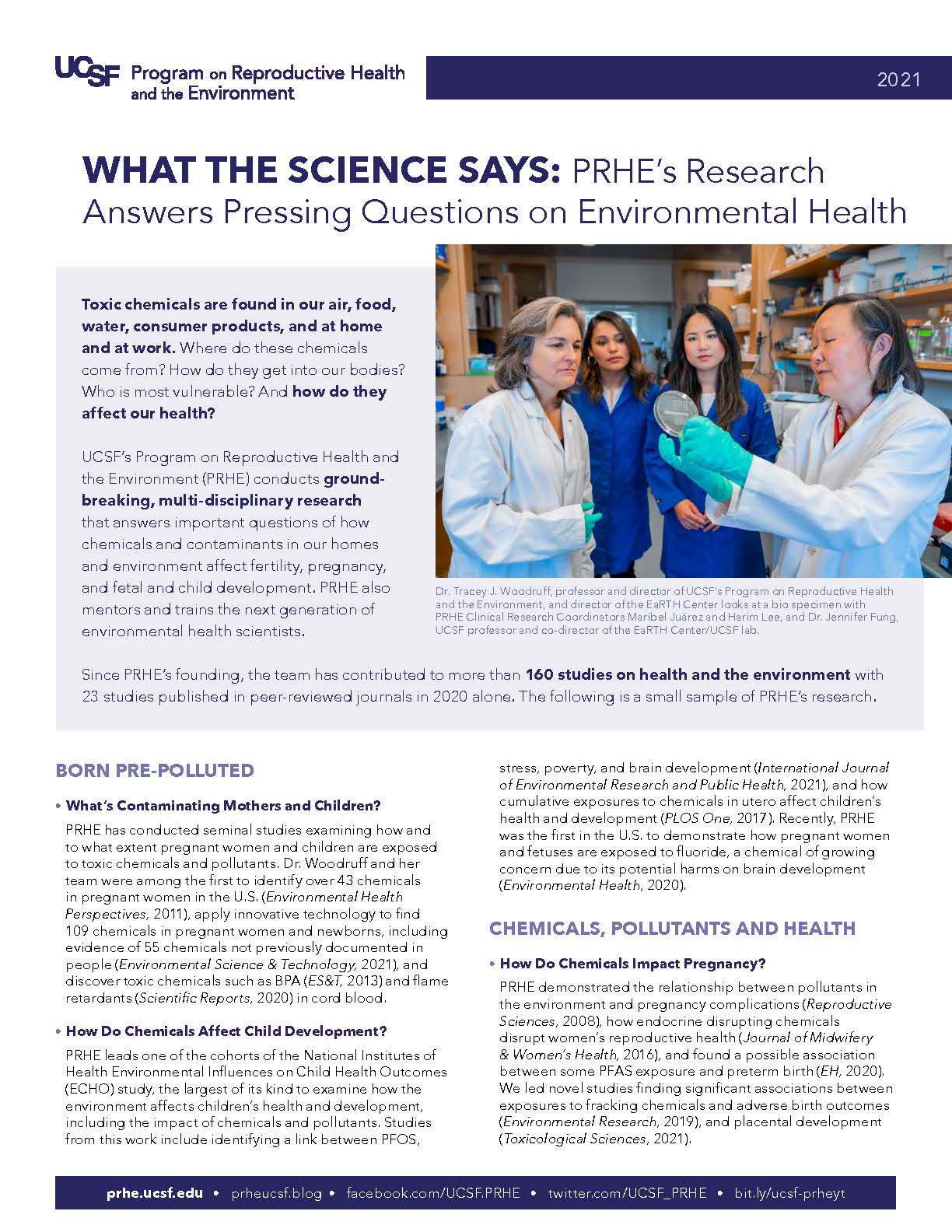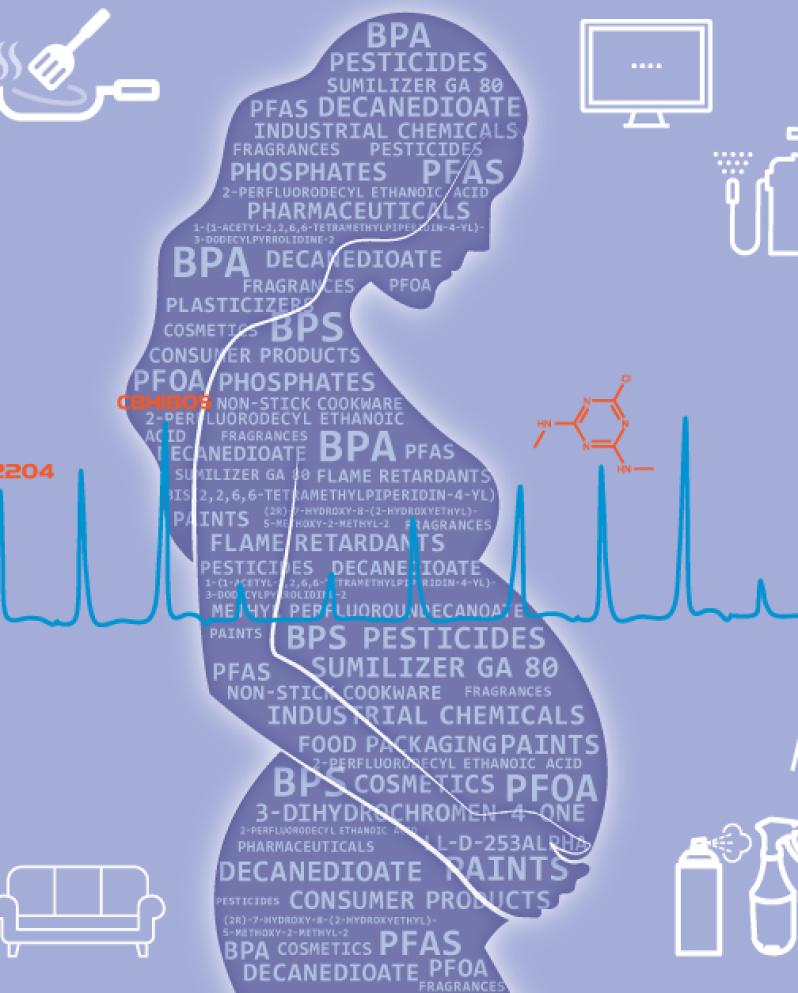Investigating environmental links to disease
Our ground-breaking, multidisciplinary research answers important questions on how chemicals and contaminants in our homes and environment affect fertility, pregnancy, fetal and child development, and health equity. We prioritize filling gaps in knowledge that support clinical decision-making and public policy.
We have written or contributed to more than 180 studies on health and the environment with 23 studies published in peer-reviewed journals in 2020 alone.
UCSF Study Finds Evidence of 55 Chemicals Never Before Reported in People
Scientists at UC San Francisco have detected 109 chemicals in a study of pregnant women, including 55 chemicals never before reported in people and 42 “mystery chemicals,” whose sources and uses are unknown. The chemicals most likely come from consumer products or other industrial sources.
The study was published March 17 in Environmental Science & Technology.
Major Research Areas

Chemicals
We study how harmful chemicals put into our air, food, water, homes, products, and workplaces affect pregnancy, child development, and health.

Plastics
Plastics are a petro-chemical product packed with endocrine-disrupting chemicals that can harm pregnancy, birth outcomes, neurodevelopment, and immune systems.

Climate and Wildfires
We examine how climate is impacting women's and children's health and how to protect pregnant people from wildfire smoke.
Key Research Projects

ECHO
The Environmental Influences on Child Health Outcomes (ECHO) is the largest NIH-funded study to date to explore how chemicals and pollutants in our environment impact pregnancy and child development.

DREAM
The Discovering cancer Risks from Environmental contaminants And Maternal/child health (DREAM) project collected data to explore how chemicals put in our air, food, and water increase cancer risk.

ENACT Center
In partnership with Stanford University, the Endometriosis Center for Action, Community Engagement and Training (ENACT) will work to improve endometriosis diagnosis and treatment by exploring the origins and environmental links to this disease.

PRHE conducts groundbreaking, multi-disciplinary research that answers important questions of how chemicals and contaminants in our homes and environment affect fertility, pregnancy, and fetal and child development. PRHE also mentors and trains the next generation of environmental health scientists.
Published Studies
Recent technological advances in mass spectrometry have enabled us to screen biological samples for a very broad spectrum of chemical compounds allowing us to more comprehensively characterize the human exposome in critical periods of development.
Per- and polyfluoroalkyl substances (PFAS) and polybrominated diphenyl ethers (PBDEs) are endocrine disrupting chemicals with widespread exposures across the U.S. given their abundance in consumer products. PFAS and PBDEs are associated with reproductive toxicity and adverse health outcomes, including certain cancers.
Preterm birth is the leading cause of perinatal morbidity and mortality in the U.S. and disparities among racial and ethnic groups persist. While etiologies of preterm birth have not been fully elucidated, it is probable that environmental and social factors play a role.
Given the complex exposures from both exogenous and endogenous sources that an individual experiences during life, exposome-wide association studies that interrogate levels of small molecules in biospecimens have been proposed for discovering causes of chronic diseases. We conducted a study to explore associations between environmental chemicals and endogenous molecules using Gaussian graphical models (GGMs) of non-targeted metabolomics data measured in a cohort of California women firefighters and office workers.
Prenatal exposure to per- and poly-fluoroalkyl substances (PFAS) and psychosocial stressors has been associated with adverse pregnancy outcomes, including preterm birth. Previous studies have suggested that joint exposure to environmental chemical and social stressors may be contributing to disparities observed in preterm birth. Elevated corticotropin-releasing hormone (CRH) during mid-gestation may represent one biologic mechanism linking chemical and nonchemical stress exposures to preterm birth.
Environmental pollutants have been associated with hypertensive disorders in pregnancy including gestational hypertension, preeclampsia, and eclampsia, though few have focused on drinking water contamination. Water pollution can be an important source of exposures that may contribute to adverse pregnancy outcomes.
Our proof-of-concept study develops a suspect screening workflow to identify and prioritize potentially ubiquitous chemical exposures in matched maternal/cord blood samples, a critical period of development for future health risks.

